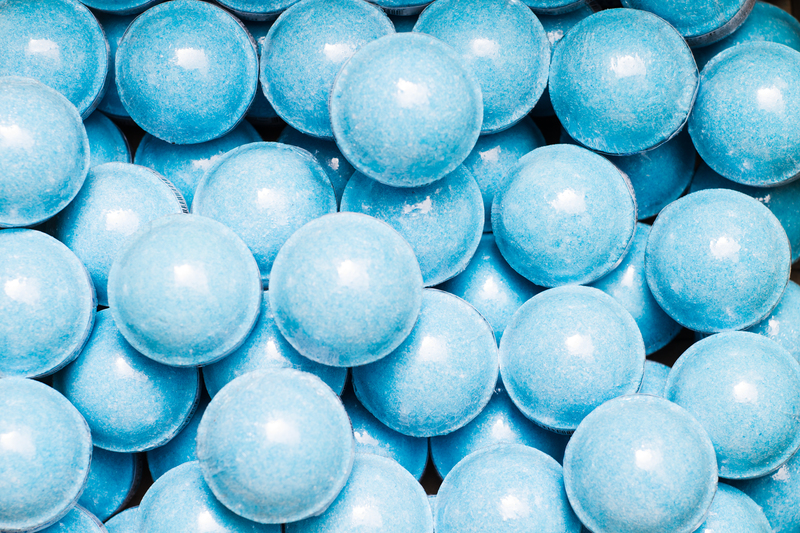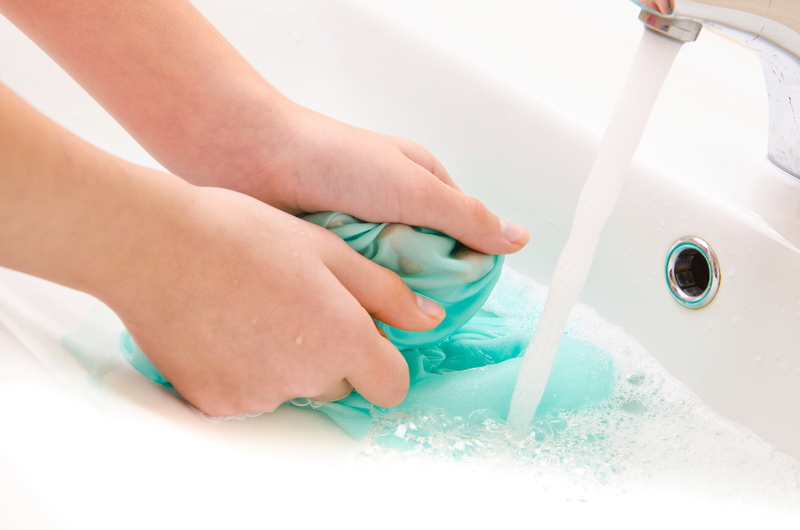Bring New Life to Your Carpets and Flooring
Posted on 28/09/2025
Bring New Life to Your Carpets and Flooring: The Ultimate Guide
Does your once-beautiful carpet look dull and lifeless? Have your hardwood floors lost their shine? If your answer is yes, don't worry. With a few strategic steps and the right knowledge, you can revitalize your carpets and flooring, restoring their charm and adding value to your home. In this comprehensive guide, we'll cover expert advice and actionable tips to bring new vibrancy and longevity to your carpet and floors.

Why Refreshing Your Carpets and Flooring Matters
Your carpet and flooring are more than just surfaces underfoot--they form the foundation of your interior's style and comfort. Over time, dirt, stains, and normal wear and tear can leave them looking unattractive. Neglected floors can even harbor allergens and affect indoor air quality.
- First Impressions: Clean and vibrant flooring instantly elevates the look of your home.
- Health Benefits: Well-maintained carpets and floors reduce dust, allergens, and bacteria.
- Property Value: Refreshed flooring boosts your home's resale value.
- Cost Savings: Regular care extends the lifespan of floors, delaying costly replacements.
So, whether you want a quick refresh or a total transformation, breathing new life into your flooring is well worth the effort.
Assessing the State of Your Carpets and Flooring
Before starting, take a close look at your coverings.
- Are there visible stains or discolored patches?
- Do you notice a persistent odor or mustiness?
- Are there signs of damage like snags, splits, chips, or warped areas?
- Is the texture matted or worn down?
Answering these questions helps to determine the best strategy for restoring your carpet and floors.
Effective Ways to Revitalize Carpets
1. Regular and Deep Cleaning
The cornerstone of fresh, healthy carpets is regular maintenance. Here's how to add years to your carpet's life:
- Vacuum Thoroughly: Vacuum at least once a week, and more often in high-traffic areas. Focus on corners, under furniture, and along walls.
- Address Spills Promptly: Blot stains (never rub) using a clean, damp cloth. Use an appropriate stain remover for tough spots.
- Professional Steam Cleaning: Schedule a deep steam clean once or twice a year. Steam cleaning lifts deep-seated dirt, allergens, and odors that vacuuming can't reach.
2. Use Baking Soda for a Fresh Scent
Sprinkle a light layer of baking soda over your carpet before vacuuming. This simple trick helps neutralize odors and leaves your carpet smelling fresh. Let it sit for 15-30 minutes, then vacuum thoroughly.
3. Invest in a Carpet Rake
A carpet rake helps lift carpet fibers that have become matted due to foot traffic or heavy furniture. Use the rake before vacuuming--your floors will regain a fluffy, refreshed look.
4. Spot-Treat Stains the Right Way
- For food and drink stains: Try a mix of white vinegar and water.
- For pet stains: Use enzymatic cleaners to break down odors and residues.
- For ink or tough marks: Rubbing alcohol or hydrogen peroxide (test first in a hidden spot).
Tip: Always test cleaning solutions on an inconspicuous area before using them widely.
5. Restore Color Faded Carpets
Sunlight, time, and repeated cleaning can dull carpet colors. To rejuvenate color, use a carpet dye kit for small sections or hire a professional for whole rooms. Sometimes, something as simple as a gentle shampoo made for brightening can do wonders.
Reviving Various Types of Flooring
Whether you have wood, laminate, vinyl, or tile, revitalizing your floors can be easier than you think with the right approach.
Hardwood Flooring
- Regular Cleaning: Sweep or vacuum with a soft head to protect the finish. Avoid wet mops that can cause warping.
- Use the Right Cleaner: Apply a hardwood-specific cleaner with a microfiber mop. Never use harsh chemicals, vinegar, or soap-based cleaners on hardwood as they can cause dullness.
- Buff and Polish: Use a floor buffer with a polishing pad to restore lost shine. Products like renewal oils and waxes can replenish the finish.
- Deeper Revival: Sanding and refinishing, while more intensive, can make even heavily worn wood floors look like new again. This process removes scratches, stains, and worn finishes.
Laminate Flooring
- Prevent Water Damage: Laminate is sensitive to moisture. Use a damp (not wet) mop and dry immediately.
- Remove Residue: Use specially designed laminate floor cleaners for stuck-on grime. Avoid waxes or polish--they can leave a dull film.
- Cover Scratches: Use a color-matched laminate repair kit to fill in small scratches or chips.
Tile or Stone Flooring
- Keep Grout Clean: Soiled grout lines can make tile floors look dirty. Use a stiff-bristled brush and a mix of baking soda with water or a grout cleaner to lift stains.
- Sealing: Natural stone and unglazed tiles benefit from being resealed periodically to prevent stains and maintain luster.
- Polishing: Use stone-specific polishers to enhance shine without making surfaces dangerously slippery.
Vinyl Flooring
- Routine Care: Sweep regularly and mop with a gentle floor cleaner.
- Revitalize Shine: Apply a vinyl floor polish or restorer for new vibrancy.
- Address Tears: Repair kits for vinyl are available at many hardware stores for small tears or gouges.
DIY Tricks for Bringing New Life to Carpets and Flooring
1. Area Rugs and Runners for Immediate Change
An easy way to reinvigorate tired flooring is to introduce a stylish area rug or runner. Rugs add color, texture, and warmth to any room while hiding problem spots on the underlying floor.
2. Rearrange Furniture
Regularly moving heavy pieces redistributes foot traffic patterns, leading to less concentrated wear. Use this opportunity to spot-clean exposed areas and rotate area rugs to ensure even fading and wear.
3. Add Floor Protectors and Mats
- Install felt pads under furniture legs to prevent scratches.
- Use entryway mats to trap dirt and moisture before it reaches your floors or carpets.
4. Use Natural Light Wisely
Direct sunlight can fade flooring and carpet colors over time. Install blinds or UV-protective films on sunny windows and periodically rotate rugs and remove obstructions for even exposure.
Professional vs. DIY Carpet and Floor Revival
Some jobs are made for professionals--think large-scale cleaning, steam treatments, carpet dyeing, and sanding and refinishing hardwood. For everyday care, however, you can be your own floor restorer.
- DIY: Most regular cleaning, minor stain removal, and using products like polish, repair pens, and restorers can be handled at home.
- Professional: Seek help with stubborn stains, deep pet odors, mold remediation, water damage, widespread warping, or major refinishing jobs.
Ultimately, mixing regular DIY maintenance with periodic professional touch-ups keeps your carpets and flooring looking their absolute best.
Preventative Tips to Keep Floors and Carpets Fresh
- No Shoes Policy: Create a shoe-free home to drastically reduce dirt and grit that prematurely ages carpet and floor surfaces.
- Prompt Spill Cleanup: Address spills immediately to prevent stains and odors setting in, especially on carpets and wood.
- Humidity Control: Use dehumidifiers in damp areas to combat mold and mildew (especially on carpets and hardwood).
- Regular Maintenance: Stick to a cleaning schedule--consistency is the secret to floor longevity.
- Protect Entryways: Use welcome mats and rugs at all doorways that transition from outside to inside.
When to Replace vs. Refresh Your Flooring
Sometimes, despite your best efforts, it may be time to replace your carpet or floor. Look for these signs:
- Irreparable Damage: Large, persistent stains, deep gouges, or widespread warping.
- Persistent Odors: Mold, mildew, or pet accidents that just won't go away.
- Delamination: Carpets pulling away from the backing, or floors lifting, bowing, or creaking excessively.
- Outdated Styles: If your flooring is simply no longer your taste or doesn't match your decor.
Refreshing your carpets and flooring should come first--but if the above signs are present, replacement may be the best investment for your home's comfort and value.

Eco-Friendly Solutions for Carpet and Floor Revival
If you're environmentally conscious, consider the following:
- Natural Cleaners: Vinegar, baking soda, and plant-based cleaners are safe and effective for many floor types.
- Low-Impact Materials: Choose sustainably sourced products for upgrades, like bamboo or recycled fiber carpets.
- Water Conservation: Use minimal water during cleaning to conserve resources and prevent floor damage.
Conclusion: Enjoy Your Revitalized Floors and Carpet
Whether your goal is to restore the former glory of your carpets or to rejuvenate aging hardwood, tile, or laminate, the strategies above ensure a stunning transformation. Regular upkeep, smart cleaning routines, and periodic professional help will make sure your floors always look vibrant and inviting.
Take these expert tips and witness how a little care can go a long way to bring new life to your carpets and flooring--making your home healthier, more beautiful, and more valuable for years to come!




